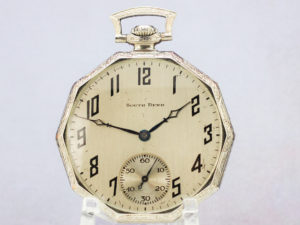How to Set a Lever Set Pocket Watch
1) Wind the watch – A full wind ensures maximum running time and performance from a pocket watch’s mainspring. Turn the crown until you feel a bit of tension. After a few more winds it will come to a stop. (A mechanism called the “click wheel” helps prevent overwinding.)
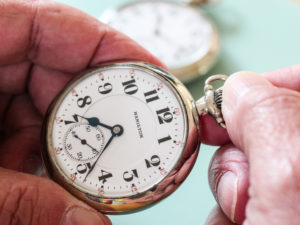
2) Access the lever – This process depends on your lever set pocket watch’s case configuration: screw-down bezel, snap or pressure bezel; hinged or hunter case.

Screw-down bezel case – The bezel unscrews in a counterclockwise direction. Be careful to grip the bezel, NOT the glass. Place the bezel down carefully – don’t put any pressure on the inside of the crystal. The lever sits flush against the dial at approximately the six-minute position.
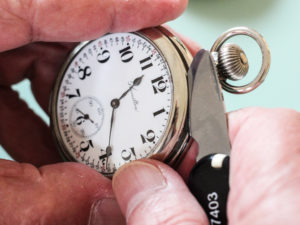
Pressure or snap bezel case – Work a pocket watch case opener – a knife with a small dull blade – into the seam at roughly the two o’clock position. (There’s often a “nail notch” indicating where to apply the case opener.) Use a little pressure to move the blade toward the crown. Once the bezel pops free, set it down carefully – don’t put any pressure on the inside of the crystal. The lever sits flush against the dial at approximately the six-minute position.
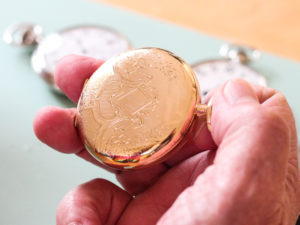
Hinged case – A hinged case has a “nail notch” around the two o’clock position to pry the case cover forwards to open. The lever sits flush against the dial at around the six o’clock position.
Hunter case – Press down on the winding stem/crown to pop open the front cover. The lever lives at around the 26-minute position.
3) Set the time – Pull the lever out with a thumbnail or toothpick – nothing sharp! No force is needed, the lever will extend with a gentle pull. The winding crown now sets the time. Turn the crown to the correct time.
4) Replace the lever – Gently push the lever back in towards the dial so it once again lies flush. Make sure it stays in while replacing the bezel.
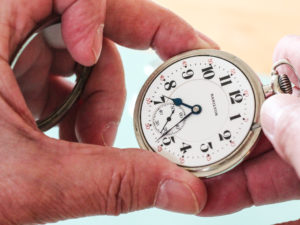
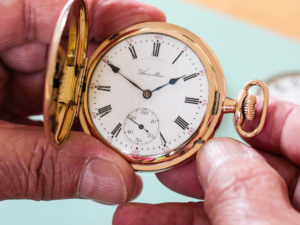
5) Replace the bezel
Screw-down bezel case – Gently place the bezel on the front threads. To prevent cross-threading, slowly turn the bezel counterclockwise until you hear a click. Then rotate the bezel to the right or clockwise, gently, until it sets. Screw it down until it’s secure, but not too tight.
Pressure or snap bezel case – The front bezel will return home with a little downward pressure, delivering a “snap” closure. Apply pressure to the bezel, not the crystal. Work your way around the bezel to ensure it’s set in place properly.
Hinged case – Swing the cover closed and press down gently until it snaps shut.
Hunter case – Press down on the front cover and the crown at the same time, then close the cover. When it’s closed, release the crown. (This increases the case spring’s longevity.)

